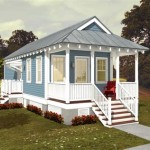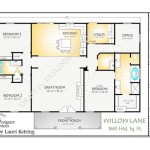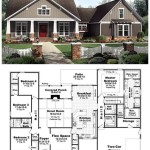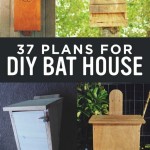Plans for a dog house refer to detailed instructions and blueprints that outline the construction and design of a shelter specifically intended for dogs. These plans provide a comprehensive guide to building a comfortable and weather-resistant space where dogs can rest, sleep, and take refuge from the elements.
Whether you’re an experienced woodworker or a beginner looking to build your first dog house, having a well-defined plan is essential for ensuring the structure’s durability, functionality, and aesthetics. Plans typically include detailed diagrams, materials lists, and step-by-step instructions, making the construction process more straightforward and efficient.
In the following sections, we’ll explore various aspects of dog house plans, including different types, design considerations, and essential features to keep in mind when choosing or creating a plan for your furry companion’s shelter.
When considering plans for a dog house, there are several important points to keep in mind:
- Size and breed
- Materials
- Roof style
- Ventilation
- Insulation
- Flooring
- Door placement
- Customization
These factors will influence the comfort, durability, and overall functionality of the dog house.
Size and breed
The size of the dog house should be appropriate for the size and breed of the dog. A dog house that is too small will be uncomfortable and confining, while a dog house that is too large will be inefficient at retaining heat and may not provide a sense of security for the dog.
- Small breeds: Small breeds, such as Chihuahuas, Toy Poodles, and Yorkshire Terriers, typically require a dog house that is around 24 inches long, 18 inches wide, and 20 inches high.
- Medium breeds: Medium breeds, such as Beagles, Bulldogs, and Spaniels, typically require a dog house that is around 30 inches long, 24 inches wide, and 24 inches high.
- Large breeds: Large breeds, such as German Shepherds, Golden Retrievers, and Labrador Retrievers, typically require a dog house that is around 36 inches long, 30 inches wide, and 30 inches high.
- Giant breeds: Giant breeds, such as Great Danes, Mastiffs, and Saint Bernards, typically require a dog house that is around 48 inches long, 36 inches wide, and 36 inches high.
It is important to note that these are just general guidelines. The best way to determine the appropriate size for your dog house is to measure your dog from the tip of their nose to the base of their tail, and then add 6 inches to each measurement. This will give you the minimum size that your dog house should be.
Materials
The choice of materials for your dog house will depend on a number of factors, including the climate you live in, the size of your dog, and your budget.
- Wood: Wood is a popular choice for dog houses because it is relatively inexpensive, easy to work with, and provides good insulation. However, wood is not as durable as some other materials, and it can rot if it is not properly sealed.
- Plastic: Plastic dog houses are durable, easy to clean, and weather-resistant. However, plastic can be more expensive than wood, and it can become brittle in cold weather.
- Metal: Metal dog houses are very durable and weather-resistant. However, metal can be expensive, and it can become very hot in the sun.
- Composite materials: Composite materials, such as fiberglass and vinyl, are durable, weather-resistant, and easy to clean. However, composite materials can be more expensive than wood or plastic.
When choosing a material for your dog house, it is important to consider the climate you live in. If you live in a cold climate, you will need to choose a material that is well-insulated. If you live in a warm climate, you will need to choose a material that is weather-resistant.
Roof style
The roof style of your dog house is important for both aesthetics and functionality. A well-designed roof will protect your dog from the elements and help to keep them warm in winter and cool in summer.
Slanted roofs
Slanted roofs are the most common type of roof for dog houses. They are easy to build and provide good drainage. Slanted roofs can be either single-pitched or double-pitched. Single-pitched roofs are sloped in one direction, while double-pitched roofs are sloped in two directions.
Flat roofs
Flat roofs are less common than slanted roofs, but they can be a good option for dog houses that are located in areas with mild climates. Flat roofs are easy to build and provide a good place for dogs to sunbathe. However, flat roofs can be more difficult to keep dry than slanted roofs.
Gabled roofs
Gabled roofs are a type of slanted roof that has two sides that meet at a peak. Gabled roofs are more difficult to build than single-pitched or flat roofs, but they provide good drainage and ventilation. Gabled roofs are a good option for dog houses that are located in areas with heavy rainfall or snowfall.
Hip roofs
Hip roofs are a type of slanted roof that has four sides that meet at a peak. Hip roofs are more difficult to build than other types of roofs, but they provide the best protection from the elements. Hip roofs are a good option for dog houses that are located in areas with extreme weather conditions.
Ventilation
Proper ventilation is essential for keeping your dog comfortable and healthy in their house. Without adequate ventilation, the air inside the dog house can become stagnant and humid, which can lead to a number of health problems, including respiratory infections and heatstroke.
There are a few different ways to provide ventilation for a dog house. One way is to install a ventilation fan. Ventilation fans can be either solar-powered or battery-powered, and they help to circulate the air inside the dog house and remove stale air.
Another way to provide ventilation is to install vents in the walls of the dog house. Vents should be placed near the top of the walls, and they should be large enough to allow air to circulate freely. You can also install a screened door or window in the dog house to provide additional ventilation.
It is important to make sure that the ventilation openings are not too large, as this could allow drafts to enter the dog house. Drafts can make your dog uncomfortable and can lead to health problems.
In addition to providing ventilation, it is also important to make sure that the dog house is well-insulated. Insulation will help to keep the dog house warm in winter and cool in summer, and it will also help to reduce drafts.
Insulation
Insulation is an important consideration for any dog house, as it helps to keep the dog warm in winter and cool in summer. There are a number of different types of insulation that can be used for dog houses, including:
- Straw: Straw is a natural insulator that is inexpensive and easy to find. However, straw can be flammable and can attract pests, so it is important to treat it with a fire retardant and to keep it dry.
- Hay: Hay is another natural insulator that is inexpensive and easy to find. However, hay can also be flammable and can attract pests, so it is important to treat it with a fire retardant and to keep it dry.
- Fiberglass: Fiberglass is a synthetic insulator that is effective at keeping dogs warm in winter and cool in summer. However, fiberglass can be irritating to the skin and lungs, so it is important to wear a mask and gloves when working with it.
- Styrofoam: Styrofoam is a lightweight and inexpensive insulator that is effective at keeping dogs warm in winter and cool in summer. However, Styrofoam is not very durable and can be easily damaged by dogs.
When choosing an insulation for your dog house, it is important to consider the climate you live in and the size of your dog. If you live in a cold climate, you will need to choose an insulation that is effective at keeping your dog warm. If you live in a warm climate, you will need to choose an insulation that is effective at keeping your dog cool.
Flooring
The flooring of your dog house is important for both comfort and durability. A well-chosen floor will provide your dog with a comfortable place to rest and sleep, and it will also be easy to clean and maintain.
- Wood: Wood is a popular choice for dog house flooring because it is durable, easy to clean, and provides good insulation. However, wood can be expensive, and it can rot if it is not properly sealed.
- Concrete: Concrete is a durable and easy-to-clean flooring option for dog houses. However, concrete can be cold and uncomfortable for dogs to lie on, so it is important to provide a soft bed or mat for your dog to sleep on.
- Tile: Tile is a durable and easy-to-clean flooring option for dog houses. Tile is also waterproof, which makes it a good choice for dog houses that are located in areas with wet climates.
- Linoleum: Linoleum is a durable and easy-to-clean flooring option for dog houses. Linoleum is also waterproof and antimicrobial, which makes it a good choice for dog houses that are home to multiple dogs.
When choosing a flooring material for your dog house, it is important to consider the climate you live in, the size of your dog, and your budget.
Door placement
The placement of the door on your dog house is important for both convenience and security. You will want to choose a location that is easy for your dog to access, but that is also protected from the elements.
- South-facing: A south-facing door is a good choice for dog houses that are located in cold climates. This will allow your dog to take advantage of the sun’s warmth during the winter months.
- East-facing: An east-facing door is a good choice for dog houses that are located in warm climates. This will allow your dog to avoid the direct sunlight during the hottest part of the day.
- West-facing: A west-facing door is not a good choice for dog houses, as it will allow the sun to heat up the dog house during the hottest part of the day.
- North-facing: A north-facing door is not a good choice for dog houses, as it will not allow your dog to take advantage of the sun’s warmth during the winter months.
In addition to the direction that the door faces, you will also need to consider the size of the door. The door should be large enough for your dog to enter and exit easily, but it should not be so large that it allows drafts to enter the dog house.
Customization
In addition to the basic features discussed above, there are a number of ways to customize your dog house to make it more comfortable and stylish for your pet. Here are a few ideas:
- Add a porch or deck: A porch or deck can provide your dog with a shaded area to relax in during the summer months. It can also be a good place for your dog to keep an eye on their surroundings.
- Install a window: A window can provide your dog with a view of the outside world and help to keep them entertained. It can also help to ventilate the dog house and reduce condensation.
- Add a ramp: A ramp can make it easier for older or disabled dogs to enter and exit the dog house. It can also be helpful for dogs that are afraid of heights.
- Paint or stain the dog house: Painting or staining the dog house can help to protect it from the elements and give it a more personal touch.
When customizing your dog house, it is important to keep your dog’s needs in mind. Make sure that the modifications you make are safe and comfortable for your pet.








:max_bytes(150000):strip_icc()/Beautiful-Pallet-Dog-House-with-Veranda-1-5a202f90494ec90037893a82.jpg)

Related Posts








